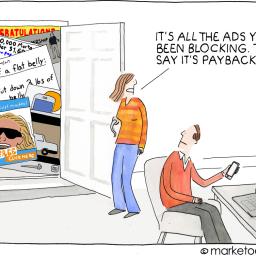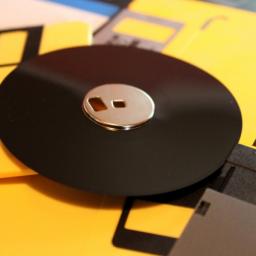On Friday the Obama administration secured a "cyber theft pledge" from South Korea.
"no country should conduct or knowingly support cyber-enabled theft of intellectual property, trade secrets, or other confidential business information with the intent of providing competitive advantages to its companies or commercial sectors;"
The first of its kind. Whether it will hold is another issue. While South Korean operations are conducted at a fraction of the scale of their Chinese neighbors, ROK spies still remain busy.
From 2007 to 2012, the Justice Department brought charges in at least five major cases involving South Korean corporate espionage against American companies. Among the accused was a leading South Korean manufacturer that engaged in what prosecutors described as a "multi-year campaign" to steal the secret to DuPont's Kevlar, which is used to make bulletproof vests...
All of the cases involved corporate employees, not government officials, but the technologies that were stolen had obvious military applications. South Korean corporate spies have targeted thermal imaging devices and prisms used for guidance systems on drones...
But South Korea has gone after commercial tech, as well. A 2005 report published by Cambridge University Press identified South Korea as one of five countries, along with China and Russia, that had devoted "the most resources to stealing Silicon Valley technology."
http://taosecurity.blogspot.com/2015/10/south-korea-signs-up-to-cyber-theft.html
The Interactive Advertising Bureau issued a remarkable mea culpa last week about the state of online advertising. In response to the rise of ad-blocking software, IAB VP Scott Cunningham said digital advertisers should take responsibility for annoying people and driving them to use ad blockers:
"We messed up. As technologists, tasked with delivering content and services to users, we lost track of the user experience".
"We build advertising technology to optimize publishers' yield of marketing budgets that had eroded after the last recession. Looking back now, our scraping of dimes may have cost us dollars in consumer loyalty"
"The consumer is demanding these actions, challenging us to do better, and we must respond."
The IAB goes on to introduce new advertising principles called L.E.A.N. (Light, Encrypted, Ad choice supported, Non-invasive ads) as a start.
This is a fundamental shift in vantage point for the Ad Tech world. In 2013, LUMApartners famously created its first LUMAscape capturing all of the fragmented, disparate Ad Tech players involved in the processing of serving up an ad to a consumer. It's an industry organized around itself, not around the needs of the consumer. Thus we see retargeting ads for sweaters we've already bought, video ads that auto-play with sound, and pop-ups that take over your screen.
https://marketoonist.com/2015/10/ad-blocking.htmlA new study finds that rising placebo responses may play a part in the increasingly high failure rate for clinical trials of drugs, but the authors of the study say that the increase in placebo responses occurred only in trials conducted in the United States.
From 1990 to 2013 the pain inhibition experienced by patients in the placebo group increased steadily, reaching an average 30 percent decrease in pain levels by 2013. Similar increases in placebo response have previously been observed in studies of clinical trials of antidepressants and antipsychotic drugs. Those studies, however, didn't pinpoint the U.S. as the source of the trend.
The authors, from McGill University, examined reported features of the clinical trials to determine what factors might be responsible for the changes over time. They found that in the U.S., but not elsewhere, trials are becoming longer (from an average of four-weeks long in 1990 to 12 weeks in 2013) and larger (from an average of fewer than 50 patients in 1990 to an average of more than 700 patients in 2013).
"The data suggest that longer and larger trials are associated with bigger placebo responses," said Jeffrey Mogil, senior author of the new paper. "This, in turn, tends to result in the failure of those trials - since it makes it harder for pharmaceutical companies to prove that the drug being tested is more effective than treatment with a placebo." He and his co-authors note, however, some potentially important differences between the U.S. and other countries. These include the existence of direct-to-consumer drug advertising in the U.S. (New Zealand is the only other country in the world that allows this), the greater spread of for-profit "contract research organizations" in the U.S., and perhaps greater exposure to the placebo concept in popular media in the U.S.
http://www.scienceagogo.com/news/20150906175924.shtml
The new study, published in the Cell Press journal Current Biology, shows that three ancient groups of hunter-gatherers living in different parts of the world without any of those trappings of modern life don't get any more sleep than we do.
'The short sleep in these populations challenges the belief that sleep has been greatly reduced in the 'modern world,'' said Jerome Siegel of the University of California, Los Angeles. 'This has important implications for the idea that we need to take sleeping pills because sleep has been reduced from its 'natural level' by the widespread use of electricity, TV, the Internet, and so on.'
To get a handle on how people slept before the modern era, Siegel and his colleagues looked to three traditional human hunter-gatherer societies: the Hadza of Tanzania, the San of Namibia, and the Tsimane of Bolivia. What they found was a surprising similarity across those three groups. 'Despite varying genetics, histories, and environments, we find that all three groups show a similar sleep organization, suggesting that they express core human sleep patterns, probably characteristic of pre-modern-era Homo sapiens,' Siegel says.
Group sleep time averaged between 5.7 and 7.1 hours. Those amounts are at the low end of durations reported in 'industrial societies.' Although they lack electric lights, none of the groups went to sleep with the sun. On average, they stayed up a little over three hours after the sun went down and woke up before sunrise. It appears that their sleep time may have more to do with temperature than with light.
http://www.dailymail.co.uk/sciencetech/article-3275149/Don-t-blame-Internet-lack-sleep-Researchers-say-hunter-gatherers-no-access-technology-sleep-6-5-hours-night.htmlA federal appeals court ruled Friday in a decadelong dispute that Google digitization of over 20 million books, mostly out-of-print titles, did not violate copyrights because the company only showed short sections of the books in its database, so it would be difficult for anyone to read any of the works in their entirety by repeatedly entering different search requests. "This does not threaten the rights holders with any significant harm to the value of their copyrights or diminish their harvest of copyright revenue."
The Authors Guild and various authors had challenged Google in 2005, contending that the digital book project violated their rights. The appeals court said Google's profit motivation does not justify denial of what is a fair use of the books' content and overall enhances public knowledge.
The appeals panel said it recognized that libraries that had negotiated with Google to receive digital copies from the company might use them in an infringing manner. It said that could expose the libraries and Google to liability but called it "sheer speculation" to raise the issue now.
http://www.mercurynews.com/business/ci_28979320/appeals-court-rules-favor-googles-online-libraryMercedes-Benz, Honda, Mazda and Mitsubishi have joined the growing list of manufacturers whose
diesel cars are known to emit significantly more pollution on the road than in regulatory tests. "The issue is a systemic one" across the industry, said Nick Molden, whose company Emissions Analytics tested the cars. Diesel cars from Renault, Nissan, Hyundai, Citroen, Fiat, Volvo and Jeep all pumped out significantly more NOx in more realistic driving conditions. NOx pollution is at illegal levels in many parts of the UK and is believed to have caused many thousands of premature deaths and billions of pounds in health costs.
All the diesel cars passed the EU's official lab-based regulatory test (called NEDC), but the test has failed to cut air pollution as governments intended because carmakers designed vehicles that perform better in the lab than on the road. There is no evidence of illegal activity, such as the "defeat devices" used by Volkswagen. Emissions Analytics had analysed about 50 Euro 6 diesels and 150 Euro 5 diesels, with only five having real-world NOx levels that matched the regulatory test. The failure of the EU's NOx test to limit real-world emissions, and tackle air pollution, has been known for some years, but specific manufacturers have not been named. The company tested both Euro 6 models, the newest and strictest standard, and earlier Euro 5 models. Data showed that:
Mercedes-Benz's diesel cars produced an average of 0.406g/km of NOx on the road, at least 2.2 times more than the official Euro 5 level and five times higher than the Euro 6 level. Honda's diesel cars emitted 0.484g/km of NOx on average, between 2.6 and six times the official levels. Mazda's diesel cars had average NOx emissions of 0.293g/km in the real world, between 1.6 and 3.6 times the NEDC test levels. One Euro 6 model, the Mazda 6 2.2L 5DR, produced three times the official NOx emissions. Mitsubishi diesel cars produced an average of 0.274g/km of NOx, between 1.5 and 3.4 higher than in the lab. "The NEDC was never intended to represent real-world driving," said a spokesman for Mitsubishi.The Emissions Analytics data seen by the Guardian also found Citroen, VW and Audi NOx emissions to be higher on the road than in the EU lab test.
Two
mysterious red hazes hovered over Earth on August 10. Astronauts onboard the International Space Station snapped a picture of the first one as it passed over the Midwest--either Illinois or Missouri. And yesterday NASA's Earth Observatory announced that a second one was spotted just minutes later over Mexico.These jellyfish-shaped streaks in the sky that reach into space are called red sprites, and they're considered to be rare phenomena-or at least elusive to human eyes.
Red sprites were first photographed in 1989. Since then they've been seen from various aircrafts, the space shuttle, and the ISS, usually about 50 miles high in the atmosphere. Yet red sprites remain mysterious-they flash for just fractions of a second, leaving scientists little time to gather data. However, scientists have a few ideas about what they are and how they form. Red sprites are thought to be caused by a rare but intense form of lightning called positive lightning. Whereas most cloud-to-ground lightning has a negative electric charge,. It makes up less than 5 percent of lightning, and it is up to 10 times stronger than negative lightning.
That flash of lightning is so strong that it breaks apart molecules in the atmosphere into ions, forming a cold plasma cloud that can be tens of miles across. The sprites' red color likely comes from those ions smashing into molecules in the air. Similar to the aurora, the charged particles excite nitrogen, hydrogen, and oxygen. The gases eventually settle down and release that energy, some of it in the form of pretty colors.
Cargo containers streamlined and revolutionized freight. Their uniform, boxy shape and sharp edges make them instantly stackable, but not terribly aerodynamic. For transport by air, that usually means fitting square pegs into round planes. A new plane design by Boeing, granted a patent this week, could change that. Instead of slotting cargo containers into a round tube, the Boeing plane would line them up longwise in a neat row, then lower its aerodynamic body on top.
The plane as sketched out is largely empty body, with four power prop engines mounted on top of the wings. Its body looks like nothing so much as a giant pink eraser, with a little bubble of a cockpit added to the front. The plane's landing gear are spaced wide enough apart that it can simply roll over its cargo containers before lowering down onto them.
Boeing imagines the plane at operating at altitudes less than 18,000 feet, so that the cargo doesn't need to be pressurized. Boeing envisions such a plane as an alternative to the slow but cost-efficient shipment of low-priority bulk cargo on boats, trains, and trucks, and the light loads of fast but expensive cargo aircraft shipments. By flying shipping containers, a plane like this could deliver large quantities very quickly, where previously price made that impossible.
http://www.popsci.com/boeing-just-patented-this-weird-cargo-planeWhere's a Zeppelin when you need one?
Lighter than air vehicles are, for the most part, relics of a distant past. Despite the past century of flight mostly belonging to airplanes and helicopters, there's been a slight resurgence of dirigibles this century. Not least among them is
the Dragon Dream, by the Aeroscraft Corporation. This is only half the size of their planned airship...
Rather than the slow-moving luxury cruisers of old, the Aeroscraft is a working vehicle designed to carry 66 tons of cargo reliably to parts of the world without runways. The 555-foot-long craft is at a design freeze. Aeroscraft thinks they have the vehicle they want, and to meet deadlines on time, they're going to stop tinkering with the design and just make the dang thing.
The Aeroscraft is just one of a small new world of gigantic lumbering dirigibles. In 2013, the U.S. Army canceled its LEMV surveillance zeppelin, but the project has since been revived in the United Kingdom as a working machine, and Goodyear is looking at replacing its soft-bodied blimps with more durable rigid airframes.

When was the last time that you used a floppy disk? While the average user might not,
there are those out there who can't settle for anything else. "In the 1990s, hundreds of thousands of industrial machines were built around floppy disks, which were high-tech of the time. They were built to last fifty years." But floppy disks were not. Replacing the machines would seem the logical option, but many of them are too valuable to scrap, or can't be easily replaced by a modern equivalent. ATMs, and some aviation tech are prime examples of devices that still have a need for data introduced through a floppy drive.
Last year, a broadcast of 60 Minutes surprised many viewers with the discovery that 8-inch floppy disks were still the preferred method of removable storage for the computers in a U.S. Air Force nuclear silo. The security of this outmoded technology was difficult to replicate with modern materials. "The floppy disks and associated technology are tried and true," I was told. "As you can imagine, we want to ensure the utmost in reliability and efficacy when operating such a critical weapon system. Therefore, if a system is 'old,' but still reliable, we are inclined to use it." When it comes to mission-critical hardware that literally controls a potential nuclear holocaust, "tried and true" carries more weight than "new and improved."
There are many niche reasons that an organization or an individual would continue to use floppy disks in 2015, but the audience isn't large enough to make production of new disks a winning proposition. There's a finite amount of floppy disks in the world, and that puts a limit on their usage out in the wild.


